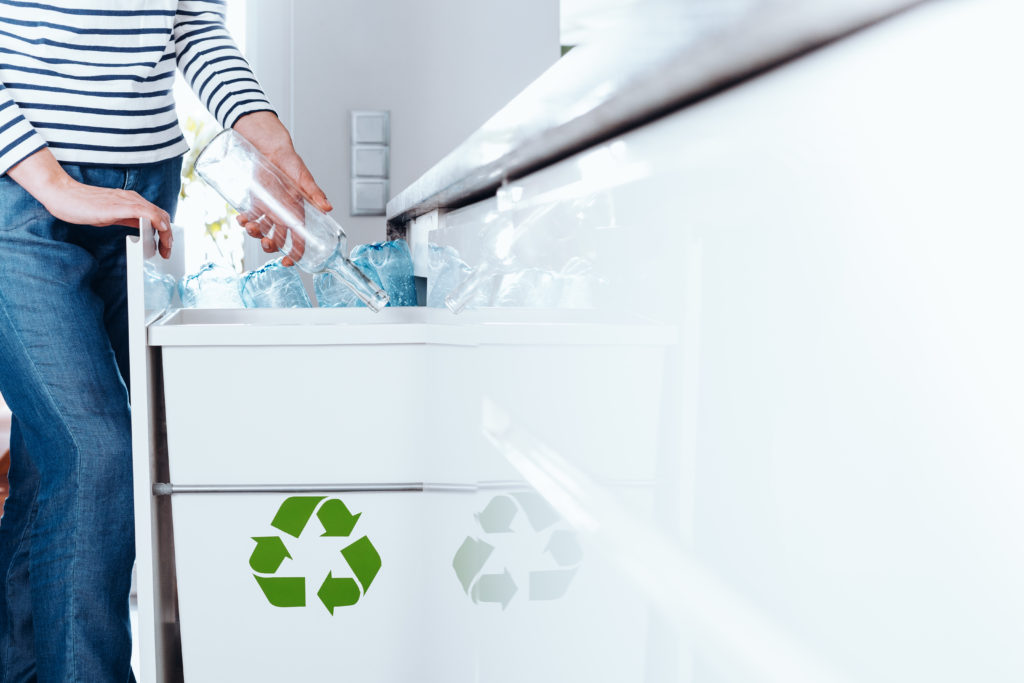
Blog
America Recycles Day: How Molecular Recycling Can Help Support Circularity Goals and Innovation
This America Recycles Day, we’re highlighting the efforts our members are making to achieve their circularity goals, as they explore how product packaging can evolve to meet the needs of consumers who are prioritizing sustainability. To reach these targets, CPG companies are looking toward molecular recycling technologies which offer new, circular solutions for product packaging, by enabling a broader range of plastic materials to be recycled.
When Consumer Brands convened its Advanced/Molecular Hill Briefing in late September, the goal was simple: to define the fundamental role our industry can play in improving plastic recycling rates and underscore the importance of molecular recycling technologies in achieving circularity.
The consumer packaged goods industry is pursuing substantive commitments to increasing the sustainability of its products through implementation of reuse and refill programs, the use of recycled materials in packaging and improving the recyclability of its packaging materials. Still, it is estimated that less than 9% of all plastic materials are currently being recycled.
Let’s zoom out to explore this dismal recycling statistic: The U.S. recycling infrastructure, is predominately dependent upon mechanical recycling. Mechanical recycling is a combination of physical processes- breaking down plastics, separating, cleaning and recombining the products into recycled plastic content. The main roadblock to circularity through mechanical recycling is that this process is unable to effectively recover a wider breadth of plastic materials including low density plastics, like flexible and film packaging, and colored PET. Mechanical recycling also struggles to recover some types of plastic as recycled content at a high enough quality to meet strict safety and quality standards set by the FDA. Challenges with sufficient supply and quality of mechanically recycled content limit broader utilization of PCR in product packaging as an alternative to the production of virgin, or new, plastic materials.
Molecular recycling, by contrast, can expand the scope of plastic materials recovered by providing recycling solutions for difficult to recycle materials including films, flexibles and colored plastics. Molecular recycling refers to a sub-sector of recycling technologies that purify or deconstruct plastic waste to create like-new building blocks for plastic products. It is also frequently referred to as advanced or chemical recycling, though Consumer Brands prefers the term molecular because it is the most versatile in its applicability to recycling technologies.
These technologies can recover more high-quality recycled content to meet the growing industry demand. Molecular recycling can take a wider range of post-consumer plastic materials, divert them from landfills and purify or transform them at the molecular level- ultimately producing high quality, like-new, plastic feedstock which can reduce the need for production of virgin plastic.
We were fortunate to have Lee Ellen Drechsler, Senior Vice President of Platform Innovation and Corporate R&D at Procter & Gamble; and Linda Roman, Director of Packaging and North America R&D Fellow at Kraft Heinz, highlight the importance of these technologies as panelists at the briefing.
Molecular recycling “opens up a whole new spectrum of how we can innovate,” said Drechsler, noting that mechanical recycling has limitations when it comes to products that may have food contact.
“We, as an industry, with a lot of support from government, can get there with these new ways [of recycling]. And we can do it in smart ways that have relatively low carbon footprints and give a lot more people access to reused plastics,” she said.
At Kraft Heinz, their goal is to “divert packaging from the landfill and keep plastic in play as long as possible,” said Roman, “the company wants to make recyclable packaging that can actually get recycled and be turned into recycled material that’s put back into packaging.”
Linda and Lee Ellen shared how their respective companies are working toward a more sustainable future, underlining that it’s not just about the manufacturing processes that a company uses, but how the company is creating and holding themselves accountable to standards which ensure the selected processes are moving toward circularity while continuing to meet consumers’ needs. Drechsler cited a mantra Procter & Gamble uses: “verify, certify, communicate,” which helps ensure an “accountable and verifiable chain of recording” for transparency in the company’s incorporation of recycled content.
There is also the product itself to consider, given packaging protects the product on every step of its journey to the consumer, Roman noted. “We want to make sure we preserve the integrity of our products to deliver against our food safety requirements. With respect to direct food contact, we can’t always use mechanically recycled plastic, so we support the exploration of other technologies to help meet our needs, while reducing plastic waste,” she said.
And this isn’t an issue that’s unique to one brand. Zooming back out, all the companies that make the products American households reach for everyday are urgently seeking to incorporate more post-consumer recycled content in their packaging to achieve their own ambitious plastic pollution reduction goals. But because of inherent weaknesses in the strength of the recycled plastic or the presence of impurities, certain product formulations may not be compatible with plastic packaging that has higher levels of recycled content sourced from mechanical recycling.
The development and incorporation of molecular recycling technologies, as a complement to mechanical recycling, will expand the availability of recycled material and supply high quality outputs that manufacturers can incorporate into packaging to achieve full circularity for plastic materials.
The CPG industry is one of many that recognizes the key role molecular recycling technologies can play in promoting circularity. Over the next few weeks, we’ll unpack more information on molecular recycling and its critical role in helping us get closer to circularity.
Published on November 15, 2024





